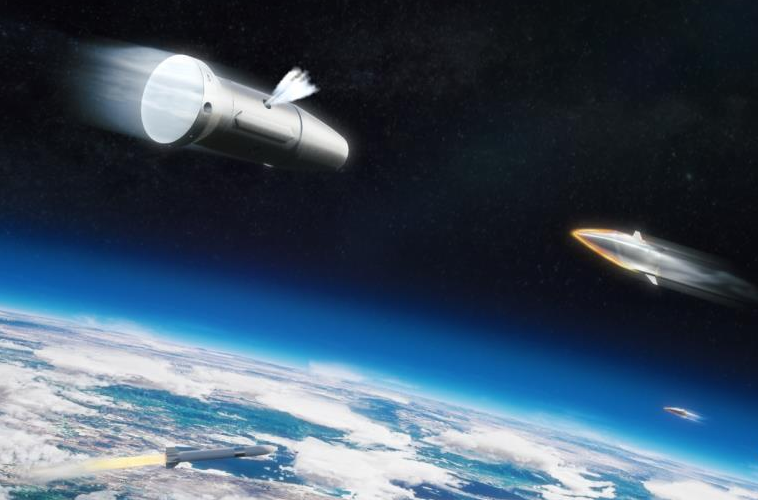The European missile manufacturer MBDA has unveiled a new study, Hypersonic Defence Interceptor Study (Hydis²), as a response to the growing threat posed by hypersonic weapons.
The project’s development comes at a time when major powers such as China and Russia are advancing their hypersonic capabilities.
During a briefing at the Paris Air Show 2023, the manufacturer presented the consortium it has assembled, spanning five nations, to conduct a three-year study aimed at designing a hypersonic interceptor missile known as Aquila.
The French, German, Italian, and Spanish branches of MBDA will be joined by ROXEL France, ArianeGroup, Lynred, and Thales LAS France for France, the MBDA subsidiary TDW and Bayern-Chemie for Germany, Avio and General Electric subsidiary Avio Aero for Italy, as well as the Dutch manufacturer GKN Fokker and Thales Netherlands.
Research centers, namely the ONERA, the DLR, the ОНВ, the CIRA, and the TNO will also participate. Sweden, Finland, Romania, Hungary, and Austria are also partners of the program.
The Hydis² initiative is an answer to a tender sent by the European Commission via the European Defence Fund (EDF). The proposal submitted by MBDA includes testing activities at the technology brick level to ensure the concept’s robustness and viability.
The study involves multiple interceptor designs with different architectures: one two-stage and two three-stage interceptors. The concept phase of this project, which spans three years, has received an 80 million euro financial contract from EDF. The aim is to have a viable interceptor capability ready by 2030.
MBDA has invested five years of research and development into Aquila, which provides a robust starting point for countering hypersonic threats. All stakeholders will meet at the Paris Air Show 2023, marking the beginning of the Hydis² program.
Looking for long-term solutions to an emerging threat
MBDA emphasizes the importance of early warning systems and threat path prediction in implementing an effective defense architecture. Through advanced algorithms and knowledge in this field, MBDA aims to infer all possible trajectories and focus on defending critical targets while allowing others to pass.
The European missile manufacturer explained that current Western defense systems are effective at altitudes either below 30 kilometers or high endo-atmospheric, beyond 40 kilometers, or even exo-endo-atmospheric.
This creates a gap of between 30 and 40 kilometers, precisely where hypersonic weapons travel. Consequently, the only defenses encountered in this range are terminal defenses, which leave very little time for countermeasures at such high speeds.
At a briefing at the Paris Air Show 2023, Lionel Mazenq, Group Head of Programme Incubator, Future Systems Directorate at MBDA, highlighted the European manufacturer’s position in designing viable interceptors, with its knowledge in designing and manufacturing long-range strike missiles.
“Our expertise in long-range strike design enhances our understanding of how these threats may develop,” Mazenq explained. “This double combination of knowledge allows us to deliver real added value in countering hypersonic challenges.”
Mazenq was questioned on the lessons learned from the interceptions of the Kinzhal hypersonic missile by Patriot anti-air defense systems during the invasion of Ukraine by Russia.
“The Kinzhal interception in Ukraine is being observed as it provides valuable information for MBDA’s ongoing research,” the head of the program explained. “However, the company is focused on developing a long-term, relevant capability in the 2030s to anticipate the evolution of hypersonic threats.”
According to Mazenq, the existing Aster 30 missile produced by MBDA is already capable of acting as a terminal phase interceptor for local self-defense against hypersonic missiles.
“When integrated into a global system with Aquila, it could provide comprehensive global defense coverage [against hypersonic threats],” Mazenq said.
The Aster 30 interceptor missile is used by the Franco-Italian SAMP/T MAMBA anti-missile system. One of these platforms was delivered to Ukraine on June 19, 2023.

